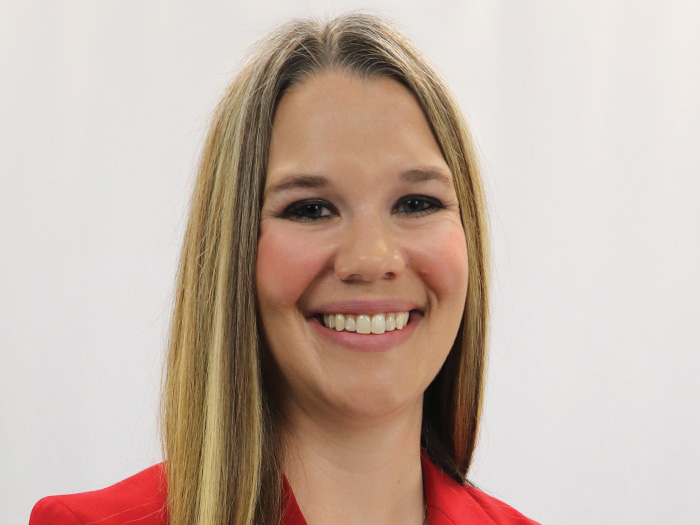The Four Horsemen of AI: How Tech Allows Tomorrow’s Underwriter to Predict, Segment, Optimize and Generate Results

While much remains uncertain about AI and its future impacts, one thing is certain: The technology will continue to evolve.
This promise of continuous change is exciting for the industry, even when tempered by the knowledge that new risks will emerge along the AI journey.
A session at the recent ITC Vegas 2023 event brought together a panel of experts to discuss how AI will affect underwriters in the future. The panel, entitled “Tomorrow’s Underwriter — Building Trust in AI, Generative and Beyond,” was moderated by Will Ross, CEO and founder at Federato.
Panelists Deborah Smallwood, CEO and founder of Strategy Meets Action; Nigel Walsh, managing director for insurance at Google Cloud; Kristin Applegate, chief information officer at Berkley Construction Services; Reid Spitz, chief product officer and cofounder at HDVI; Robert Pick, EVP and chief information officer at Tokio Marine North America; and Andrea Keenan, chief strategy officer at AM Best shared their thoughts during the hour-long session.
The speakers divided their comments into four sections to break down the topic into a more digestible framework, centering their thoughts around how AI helps to predict, segment, optimize and generate things — coined “the four horsemen of AI” by the panel.
The Growing Partnership Between Underwriters and AI

Will Ross, CEO and founder, Federato
The integration of AI into the workflows of underwriters, claims adjusters, risk managers and others in the insurance life cycle is happening at various levels and speeds.
Ross explained how the progression of the definition of AI will continue to evolve, pointing out that when computers first played chess against humans, that was called AI. Then when Siri and Alexa became household names, we called them AI.
Now, ChatGPT has become inextricable from the term.
Since people are already familiar with some of these AI technologies — and are likely using them in their personal lives — the challenge has shifted to one of education, not familiarity.
Ross said, “Building trust in this AI Moment is an imperative for insurers, and that all starts with education. Whether it’s ChatGPT or something as simple as a weather forecast, Netflix recommendation or Uber ride, if insurers can appreciate all the modalities of AI in their day-to-day, they’ll start to see opportunities for innovation at work well within their comfort levels.”
The panel started by talking about opportunities and use cases where AI can help predict things at various times during the insurance life cycle.
Spitz introduced the idea of a winnability score, a single number that is generated by AI and predicts the likelihood that future underwriting submissions will be accepted.
“One of the ways to use a predictive model is winnability. [You can] capture all kinds of information on a risk and all data points, take the information and use it to predict the winnability of future submissions,” Spitz explained.
This type of dynamic score can help leverage an underwriter’s time more efficiently as they triage submissions and aid in broker management.

Deborah Smallwood, CEO and founder, Strategy Meets Action
Smallwood spoke more about the winnability score: “The winnability score represents a powerful new metric that commercial lines carriers should all adopt. What’s exciting about new capabilities like winnability is that we are solving classic problems in a new way by leveraging the power of advanced analytics and AI with various data and information sources.”
The winnability score can be compared to the traditional hit ratio usually measured by the industry.
“We’ve always measured the hit ratio, which is based on the outcome of binding business, and [the next step is] to now shift workflow priorities and assignments to a more proactive winnability approach to determine what risks to work up front based on the predicted likelihood of a hit. Winnability fundamentally alters a carrier’s competitive advantage on new business submissions,” said Smallwood.
GenAI Touches Every Part of the Insurance Life Cycle
Moving on to segmentation and optimization, the panel talked further about how AI can be used to impact insurance processes.
When it comes to segmentation, Walsh pointed out that everyone is different and is an individual, even while we share some interests or passions.
The type of mass personalization that would be required to segment at the individual level isn’t possible in insurance yet. However, the tools can help with optimizing processes.
Some ways AI tools can help with optimization across the insurance life cycle include exploring data points and information that wasn’t previously accessible.
GenAI can generate detailed analyses of this data to help guide the next step in workflows. Adjusters and underwriters can use these summaries to begin their own detailed analysis, but having the starting point generated by AI saves time and resources.
“The benefit of a GenAI platform is that it never forgets,” said Pick.
“AI ingests prior underwriting decisions and provides guidelines to young underwriters, which accelerates their learning curve and lowers errors.”
Optimizing the training and development of new associates is a significant benefit GenAI brings to the industry.
As partnerships between insurers and Insurtechs continue to flourish, so do those between tech solution providers.
“Federato has always stood out in the startup community for solving some of the insurance industry’s most complex challenges,” said Google Cloud’s Walsh.
“By embedding Google Cloud’s advanced AI capabilities in its risk operations solutions, Federato can help assist insurers in creating a more efficient underwriting process.”
Applegate said, “We’re at a tipping point where technology can start to take over parts of the workflow. It’s critical to get experts in the industry on board with technology — people are more likely to support tech if there is something in it for them. We have to make technology more approachable and add legacy knowledge from underwriters who will be retiring, [to build in] that gut feel.”
Some takeaways from the panel include the fact that GenAI is everywhere, and a gap will begin to widen between insurers that use it well and those that do not.
The question we must answer is: How do we use GenAI to be better than we are today? That is how our industry will drive better outcomes for policyholders and society using emerging technologies. &










